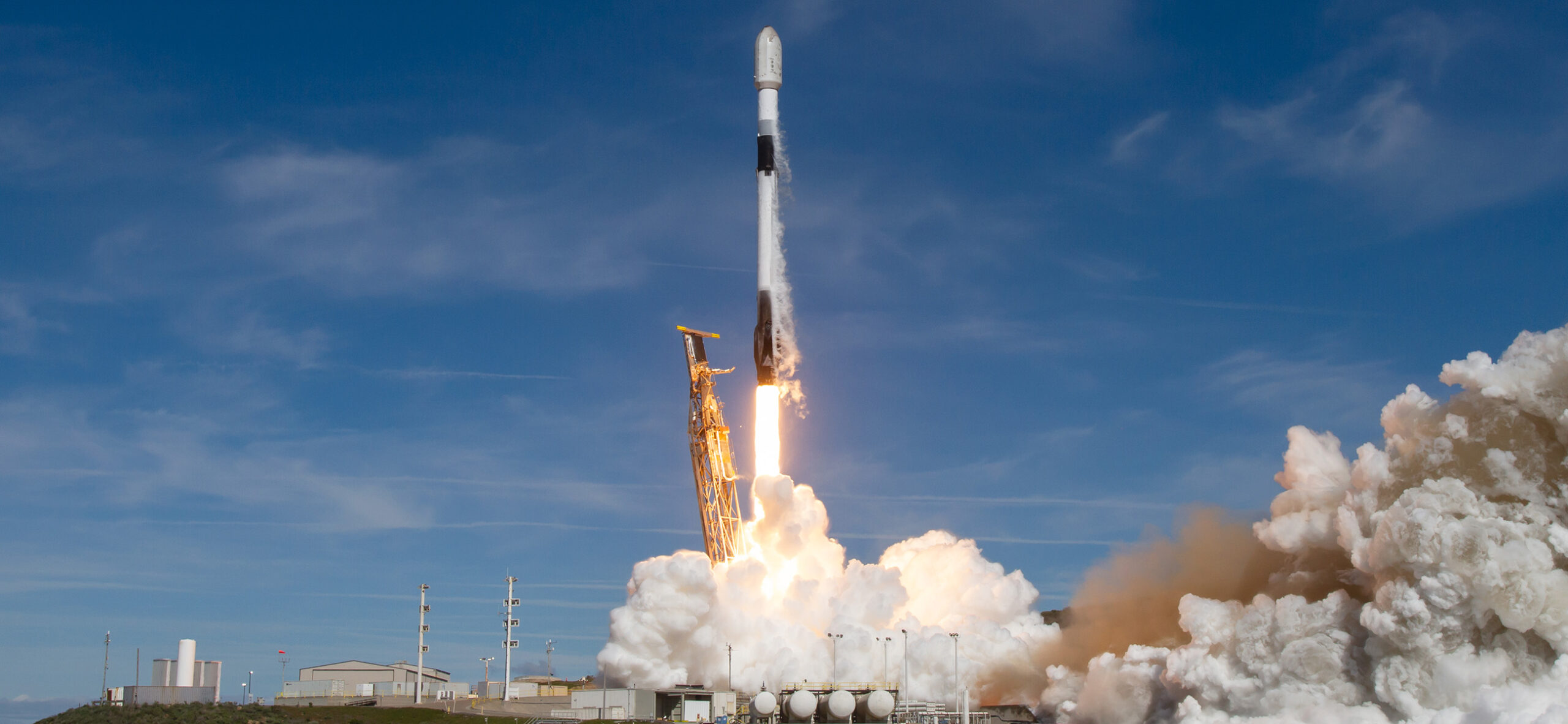Latest News

SpaceX launched the Transporter-10 rideshare mission on March 4th. 2024 Photo: SpaceX
SpaceX launched 53 payloads in the Falcon 9 Transporter-10 smallsat rideshare mission, SpaceX’s first rideshare mission of 2024. The mission launched from Space Launch Complex 4E at Vandenberg Space Force Base in California on March 4 at 2:05 p.m. PT. This was the tenth dedicated rideshare mission organized by SpaceX.
Aboard the Transporter-10 mission were new and returning customers.
Some new customers included Space Machines Co, an Australian startup that had its first-ever launch of Optimus, its orbital servicing vehicle. True Anomaly also launched its first two satellites on the mission with its first two Jackal spacecraft, about 275 kilograms each.
The first MethaneSAT methane emissions tracking satellite was successfully deployed. MethaneSAT is tasked with quantifying total methane emissions over wide areas and identifying large emitters from oil and gas operations. The satellite was developed by a subsidiary of the Environmental Defense Fund (EDF).
Four Spire Global satellites were successfully launched. Two of the satellites Spire built were for Myriota, for its Internet of Things (IoT) constellation of more than 30 satellites. Spire also built two satellites for Hubble Network. These satellites are for Hubble Network’s IoT mission, aiming to establish a satellite network accessible to any Bluetooth-enabled device, even in areas without cellular reception.
Sidus Space launched its first LizzieSat. The space-based data collection satellite aims to broaden its customer base across military and commercial sectors, offering intelligence solutions for industries such as defense, agriculture, maritime, and oil and gas. The company is planning for upcoming missions, with LizzieSat-2 and LizzieSat-3 expected to launch on future SpaceX rideshare missions.
Japanese company Axelspace successfully deployed its demonstration satellite PYXIS. PYXIS is the first satellite of Axelspace’s AxelLiner, the one-stop microsatellite service. PYXIS will work on several missions in orbit including the demonstration of the satellite bus system 2 for AxelLiner, Using the sensors for the next-generation AxelGlobe satellites (GRUS), and a satellite radio experiment system by SONY Group.
Aerospacelab successfully deployed its first very high resolution (VHR) satellite, nicknamed “Rose.” Rose is equipped with high-resolution imaging capabilities that can capture detailed images of Earth’s surface. Once in orbit, this satellite can provide images for precise monitoring of features and phenomena on the Earth’s surface. This data aims to help approach issues such as disaster response, urban planning, and national security.
Lynk Global launched a pair of satellites, Tower 5 and Tower 6, for direct-to-device connectivity. This pair of satellites will join the three Lynk spacecraft already in orbit to provide messaging services for cell phones
Ubotica deployed its CogniSAT-6 mission in its partnership with Open Cosmos, which built the satellite called Hammer (Hyperspectral AI for Marine Monitoring and Emergency Response). The mission with the Hammer satellite combines onboard AI with live communications to stream Earth intelligence directly to users.
MuSat2 from Muon Space also had successful deployment for its second satellite, which includes Muon Space’s software-defined radio system, and reflectometry sensors among its payloads to provide weather data collection for the Department of Defense.
Unseenlabs launched BRO-12 and BRO-13, two more of its maritime tracking radio frequency sensing/signals intelligence satellites, These will join nine satellites from the company’s constellation. The French startup raised $92 million in its latest funding round last month.
Loft Orbital launched YAM-6, its first “virtual mission-enabled” satellite that provides customers with customization use of the satellite for imaging applications.
Some additional payloads that were launched on the mission included the SONATE-2 satellite from University of Würzburg in Germany, Solestial, the HORACIO satellite for Satlantis.
Get the latest Via Satellite news!
Subscribe Now